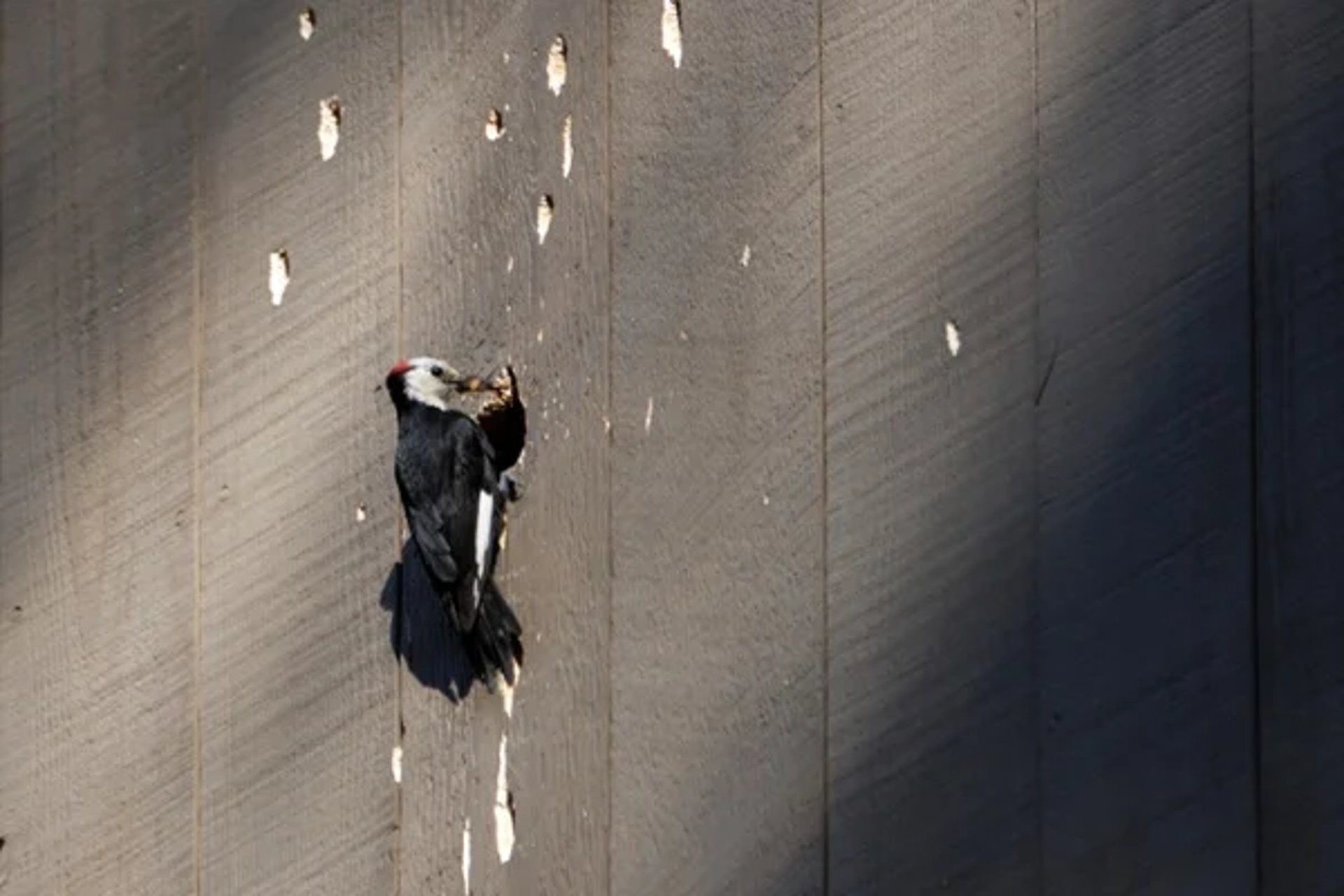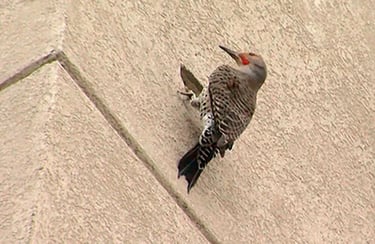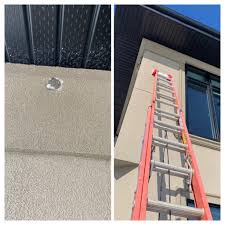
Repair WoodPecker Damage Stucco
Repairing woodpecker damage to stucco can be a straightforward process if approached methodically. Begin by assessing the extent of the damage; small holes may only require a simple fill, while larger areas might need more extensive treatment. Start by cleaning the affected area to remove any dust or debris. For small holes, use a stucco repair compound or patching material, applying it with a putty knife and smoothing it over to match the surrounding texture. For larger damage, you may need to add a lath to provide support before applying the stucco mix. Once the repair material is set, finish by painting it to match the existing wall color. Finally, consider preventative measures, such as installing decoys or sound deterrents, to keep woodpeckers from returning and causing further damage. Regular maintenance and early repairs can protect your stucco home from these persistent pests.
Repair and Protect Stucco Damaged by Woodpeckers
The first step is to assess the extent of the damage. Inspect the area thoroughly to identify all affected sections. Once you’ve located the problem spots, clean away any loose debris or broken stucco around the holes to ensure proper adhesion during the repair process.
WoodPecker Damege Stucco
Woodpeckers, known for their distinctive tapping sounds, can sometimes become a nuisance when they target homes for their foraging activities. When these birds peck at the exterior of a house, particularly areas with stucco, they can cause significant damage that requires prompt repair. The pecking can create small holes, which not only detract from the home's aesthetic appeal but can also lead to further structural issues if moisture seeps in. To address this, homeowners must first assess the extent of the damage, ensuring any wood rot is dealt with. After patching up the holes with appropriate stucco repair techniques, it’s also wise to consider measures to deter the woodpeckers from returning, such as installing protective barriers or using visual deterrents. Regular maintenance and vigilance can help preserve the integrity of the home while keeping these fascinating birds at bay.
Woodpeckers peck holes in stucco for a variety of reasons tied to their natural behavior. One primary motive is the food search—stucco walls may house insects or larvae that attract the birds. Woodpeckers are also known to drum on hard surfaces like stucco to establish territory or communicate with potential mates, as the sound carries over long distances. Additionally, they might see it as an ideal spot for nesting, using their sharp beaks to create cavities in the material. While this behavior is instinctual, it can cause significant damage to properties and may require preventative solutions to deter them.
Why Woodpeckers Peck Holes in Stucco
Unlike parging, EIFS stucco is a type of wall cladding that features a layer of styrofoam, providing a softer yet protective coating commonly used on commercial buildings.
This softer surface is highly appealing to birds for nesting. Its texture, softer than standard concrete stucco, mimics the hollow sound of tree trunks, making it an inviting material for creatures like woodpeckers. The allure stems from its ability to offer protection and stability, resembling natural habitats.
As a result, it’s not unusual to find holes in stucco created by woodpeckers. Once attracted to this material, they begin pecking at it. When they discover that it yields and mimics the feel of wood, they often persist until they carve out a full hole.
Interestingly, sometimes woodpeckers are drawn to EIFS stucco purely for its acoustic properties. The hollow sound resonates and serves as their method of marking territory, creating rhythmic drumming to assert dominance over an area. So, if you hear constant tapping around a building, it’s likely a woodpecker hard at work.
This relentless pecking inevitably damages the stucco, leaving behind gaping holes that often serve as nesting sites. Unfortunately, these incidents can lead to significant structural problems and pose a challenge to repair effectively.
Preventing woodpeckers from damaging stucco requires a combination of strategies to protect the surface and deter the birds. Here are several effective methods:
Install Physical Barriers: Cover the vulnerable areas with bird netting, hardware cloth, or metal sheeting to make the surface inaccessible to woodpeckers. Ensure the barriers are secure and do not leave gaps they can exploit.
Repair Damage Promptly: Woodpeckers are often attracted to existing holes, as they signal a potential nesting site or source of insects. Repair any entry points as soon as possible and repaint the area if needed.
Identify the Cause: Woodpeckers may be attracted to your stucco for insects, resonance, or shelter. Addressing these underlying causes—such as treating pests—can reduce their interest in your home.
By combining multiple methods and staying consistent, you can effectively safeguard your stucco against woodpecker damage.













